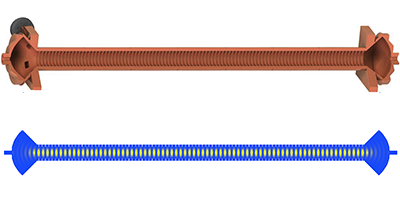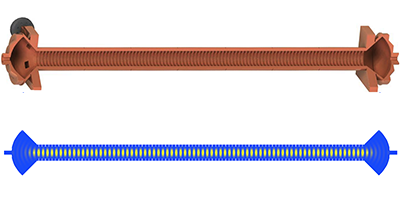An Undulator Made of Microwaves
Electromagnetic radiation emitted by accelerated charges is a headache for particle colliders but a boon to researchers who use it, for example, to study materials at synchrotron and free-electron-laser facilities. For decades, physicists have been generating bright, collimated emission from energetic electrons by sending them through dedicated devices called undulators and wigglers. Now in Physical Review Letters, researchers demonstrate a versatile undulator that exploits the magnetic and electric fields of intense microwaves rather than the field of fixed magnets.
High-energy electrons traveling along an undulator experience a transverse magnetic field that alternately reverses direction, causing the electrons to jiggle from side to side and emit a light beam parallel to their overall motion. The typical emission wavelength is smaller than the alternation period by a factor that increases with the electron energy, so producing short wavelengths is easiest if the undulator has a short period. But in the traditional fixed-magnet design, shrinking the spacing decreases the field strength unless the magnets are correspondingly close together, which can block the electrons. Sami Tantawi and his colleagues at SLAC National Accelerator Laboratory, California, trapped microwaves in a long cavity to create, without using any physical magnet, an equivalent alternating field up to tesla with a period of about millimeters, while allowing nearly millimeters for the beam.
A key advantage of the device is its tunability: The team varied the ultraviolet wavelength emitted by electrons from the SLAC linear accelerator by changing the microwave power. Further, the cylindrical cavity should let them rapidly rotate the microwave pattern and thus the polarization of the emitted light, which is not possible in conventional undulators. The prototype device successfully produced coherent light radiation when injected with regularly spaced bunches of electrons. By increasing its length, it might act as a laser on its own (i.e., a free electron laser). – Don Monroe





